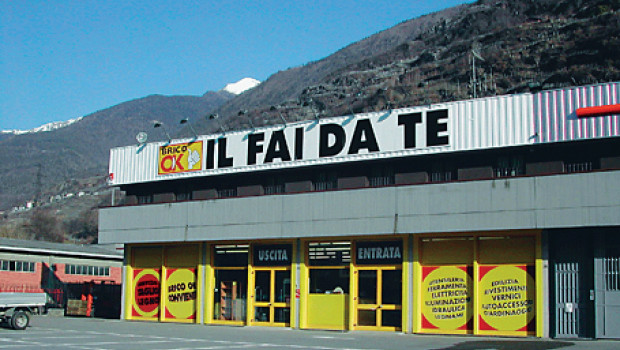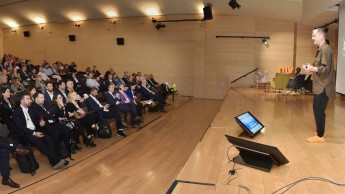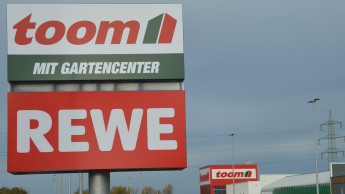Despite the difficult state of the economy, the trend towards opening new DIY superstores is continuing apace in Italy
A total of 14 DIY stores were opened in the first months of this year, a positive development in the light of the difficult economic situation. However, it seems that consumers tend to fall back on the possibilities offered by do-it-yourself precisely at times of relative uncertainty, for both practical and psychological reasons.
Two new enterprises are being considered in this account. The first is La Prealpina, which has eight stores mainly in Piedmont and the Aosta Valley, and the second is the FDT Group, which has eight sales outlets and a total retail area of 14 800 m² in Lombardy.
Brico OK from Lombardy is now expanding into southern Italy.
Italy’s special geographical and social features are clearly manifested in the regional character of these two DIY chains, though companies like Brico OK must not be forgotten in this context: having worked for years in Lombardy, the group is now beginning to expand in the south, especially in Sicily.
Growing importance of DIY in the south
The majority of DIY stores and hardware shops are to be found in the north of Italy, and in the east and west of the country. The figures have gone down only marginally since 2001. The total number of outlets in northern Italy – from the Aosta Valley to Friaul and from Trentino to Emilia Romagna – has declined by 0.5 per cent to 180, followed by central Italy with a decline of 0.4 per cent to 94 outlets. By contrast, a very slight increase of 0.9 per cent is evident in southern Italy for a total of 56 units. Heading the league table by a wide margin is Lombardy with 72 stores, followed by Veneto with 40, Latium with 38, Piedmont with 27 and Tuscany with 23. These five regions account for 61 per cent of all the stores.
In terms of sales area, these five regions claim 66.2 per cent of the combined floorspace, though Tuscany has surrendered its position to Sicily with a total of 59 671 m². The situation in Sicily is exciting the interest of many retail groups, big ones as well: they include Legno Market of Scalia, a company that is a member of the Punto Brico voluntary group, with two branches of its own and three affiliated franchise stores, which together achieve a total area of 36 600 m2, and Romano Legno Mercato, which also belongs to Punto Brico and presents its products in stores in Modica and Syracuse on a total area of 7 700 m².
Product trends and consumer behaviour
Product display is becoming increasingly important.
Entrepreneurs in this sector are very cautious with their projections for the future, mainly because of the economic uncertainty. According to the first indications, no increase in consumption can be expected in the next few months, though the sector may well profit from the immediate situation as it did in 2002. All the retail chains intend to expand their number of outlets during the current year. If the present trend continues, the number of franchised branches should see a greater increase than the number of multiple stores. The attitude of Italian retailers towards franchising, which for a long time seemed to hold little attraction for them, has changed.
Of the 32 new openings in the year 2002, franchising or voluntary groups were responsible for a total of 26, which left only nine that started life as multiple outlets. This gives a clear indication of the competitive pressures that individual retailers in this market feel exposed to and the resulting difficulties in surviving. As regards product categories, the companies are united in considering that decorating is where the best sales results are to be had. Then come flat-pack and garden furniture, as well as gardening in general, and all aspects of lighting. The balance sheet is also positive for both motorised and hand tools, even though imports have depressed average prices in this category. In-store merchandising is becoming increasingly important, claiming more space and attention. Displays of furnishings and paints, where the final result is all-important, are set up to create a particular ambience. The retailers are basically satisfied with the help they are given by suppliers in this respect, but are hoping for even greater cooperation in the future.
Special promotions have meanwhile become well established and are now carried out six to eight times a year. The main advertising medium is still the leaflet, sometimes personalised to meet the requirements of individual partners, followed by the press and local radio stations.
Special promotions are now firmly established in Italy.
With regard to consumers, two independent surveys commissioned by Castorama and Brico Io show that the proportion of female customers is rising rapidly.
The jobs most frequently carried out are decorating, simple DIY tasks and minor household maintenance work. Whereas customers in southern Italy are still very price-conscious, those in central and northern Italy will spend a few more euros on a product offering better quality or performance.
DIY multiples in Italy
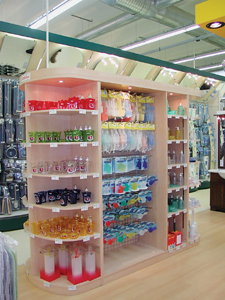

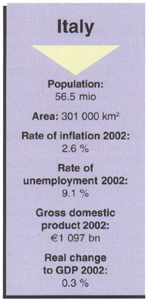

 Menü
Menü




